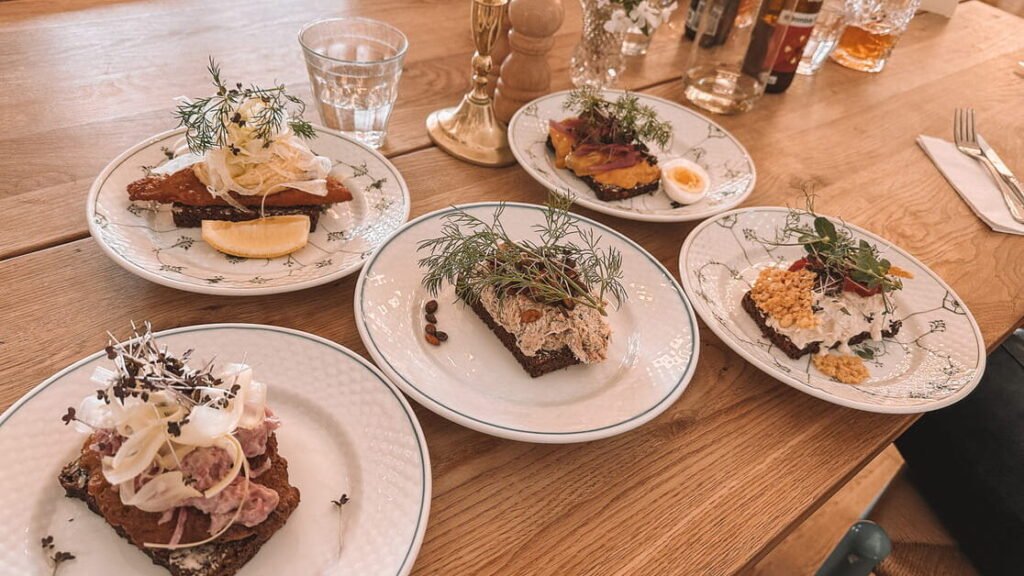As a Dane with a deep love for our local cuisine, I’m thrilled to share the delights of the best food in Denmark with you.
Known for its straightforward yet flavorful dishes, Danish cuisine offers a taste of both tradition and innovation.
In this guide, I’ll introduce you to the essential foods that every visitor should try—from hearty rye bread to the exquisite smørrebrød.
Join me on this culinary journey through Denmark, where each dish not only satisfies the palate but also tells a story of culture, history, and a profound appreciation for quality and sustainability.
Finally, consider doing a food tour in Copenhagen if you only have a few days to visit. These are great for trying many local things in one go!
What Food Should I Eat in Denmark?
Rye Bread (Rugbrød)
A staple in every Danish household, rye bread or ‘rugbrød’ is more than just bread; it’s a part of the food culture and is the most common Danish lunch.
Enjoy this dense, dark rye bread as the base of the famous open-faced sandwiches, smørrebrød.
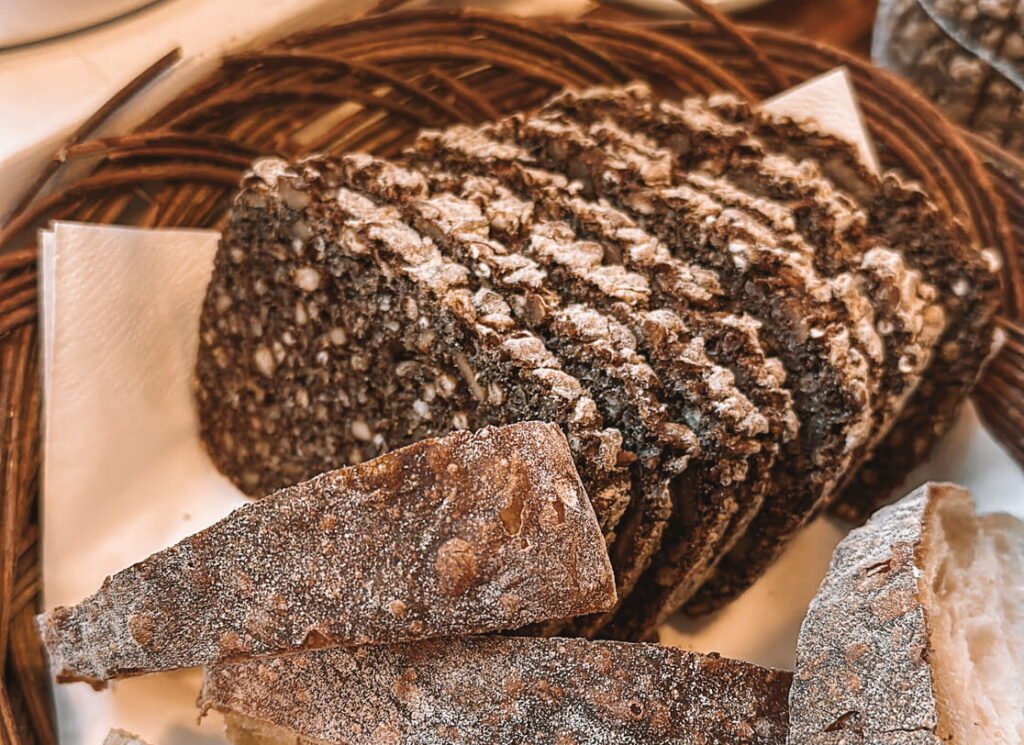
Its robust flavor and nutritional value make it a popular choice, fulfilling the Danish preference for hearty, wholesome breads.
Health Benefits: High in fiber and packed with vitamins and minerals due to the dark rye flour.
Culinary Uses: A versatile base for sandwiches or simply enjoyed with butter.
Fiskefilet
A quintessential part of traditional Danish cuisine, fiskefilet refers to breaded fish fillets, usually cod or plaice, fried until crispy and golden.
Eat this dish with remoulade and lemon for a delightful balance of flavors.
Perfect Pairing: Typically served with remoulade sauce and a wedge of lemon for a zesty finish.
Where to Try: Coastal towns in Denmark offer the freshest catch for an authentic tasting experience.
Smørrebrød
Smørrebrød, the iconic Danish open-faced sandwich, showcases the artistry of traditional cuisine.
Each sandwich is a creative composition of rye bread with butter with things like herring, roast beef, or egg.
It’s a testament to the simplicity and elegance of Danish food.
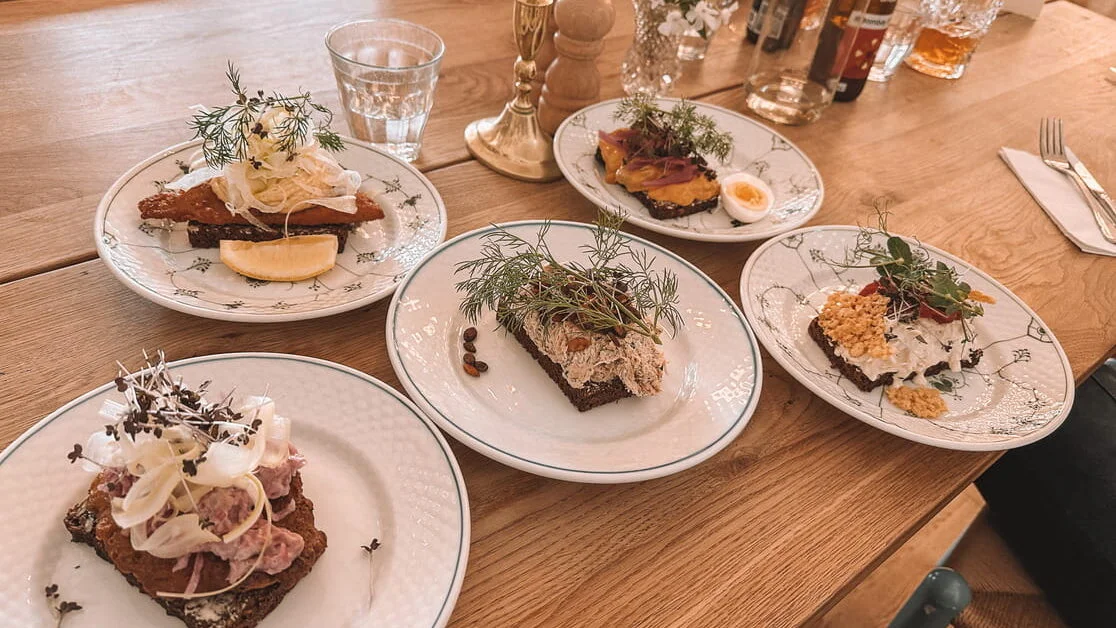
Smørrebrød deserves a second mention for its cultural significance and variety. Each piece is not just food but an expression of Danish aesthetic sense—colorful, meticulously arranged, and bursting with flavors.
Local Tip: Visit a famous smørrebrød restaurant in Copenhagen for the full experience.
Variety: From smoked salmon to roast beef, cold meats, salted pork, roast duck, hard-boiled eggs, and more, the toppings are endless and always evolving. Infinite combinations make each piece a unique culinary creation.
Recommended Topping: Try the classic combination of pickled herring, raw onion, and capers or the chicken salad.
Frikadeller
These Danish meatballs made from ground pork (or a mix of meats), onions, eggs, and spices are a beloved traditional dish in Denmark.
Frikadeller are typically pan-fried and served with boiled potatoes and parsley sauce or red cabbage.
Continuing with frikadeller, these beloved meatballs are not just a dish but a part of Danish heritage.
Often served during family gatherings or traditional holidays, they are a symbol of home cooking in Denmark.
Serving Suggestion: Accompany with pickled red cabbage, brown sauce, or cold potato salad.
Cultural Note: Often featured at the Christmas dinner alongside other Danish favorites.
Serving Suggestion: Enjoy with boiled potatoes and creamy parsley sauce for a comforting meal.
A Must-Try at traditional Danish restaurants and family dinners.
Fiskefrikadeller
Similar to frikadeller but made with fish, these fish cakes are a lighter alternative that still packs a flavor punch.
Mixed with herbs and spices, they are fried to perfection and often served with remoulade sauce and lemon slices.
Ideal For: A lighter meal that doesn’t compromise on taste.
Serving Tip: Enjoy these fish dishes fresh from the pan with a squeeze of lemon.
Smoked Salmon
Known globally for its quality, Danish smoked salmon is a treat for seafood lovers.

Serve them on rye bread or as part of a lavish Danish brunch spread.
Flavor Profile: Delicately smoky with a silky texture.
Health Benefits: Rich in Omega-3 fatty acids and protein.
Herring
A key player in Danish cuisine, herring can be found pickled, smoked, or curried.
It’s a traditional food that has been a part of Danish diets for centuries, often served on rye bread as smørrebrød.
Bornholm makes an excellent weekend trip from Copenhagen and is a great place for trying herring.
Cultural Significance: Integral to Danish holidays and family gatherings and sold at most Danish supermarkets.
Try It With a cold Danish beer or schnapps for an authentic experience.
Danish Hotdog
Far from your average hotdog, the Danish version is an elevated street food experience.
Served in a bun with a variety of toppings like pickles, crispy onions, and remoulade, it’s a must-try for any visitor and it’s a New Nordic cuisine trend to serve it gourmet style.
Expanding on the Danish hot dogs, it’s essential to mention the variety found across the country, from traditional versions to gourmet hot dog variations incorporating ingredients like wild mushrooms or specialty sausages.
Each hot dog stand or “pølsevogn” offers a unique experience.
Try: The ‘French hot dog’, a popular variation served in a baguette with cheese.
Local Experience: Look for stands in bustling markets or at busy city corners for the freshest experience.
Street Food Staple: Best experienced at a local “pølsevogn” (sausage wagon) or street food stand in Copenhagen.
Customize Your Order: Choose from a variety of traditional and gourmet toppings to suit your taste.
Stegt Flæsk
This is Denmark’s national dish. ‘Stegt flæsk’ is a crispy pork belly dish with hot and fresh parsley sauce and potatoes.
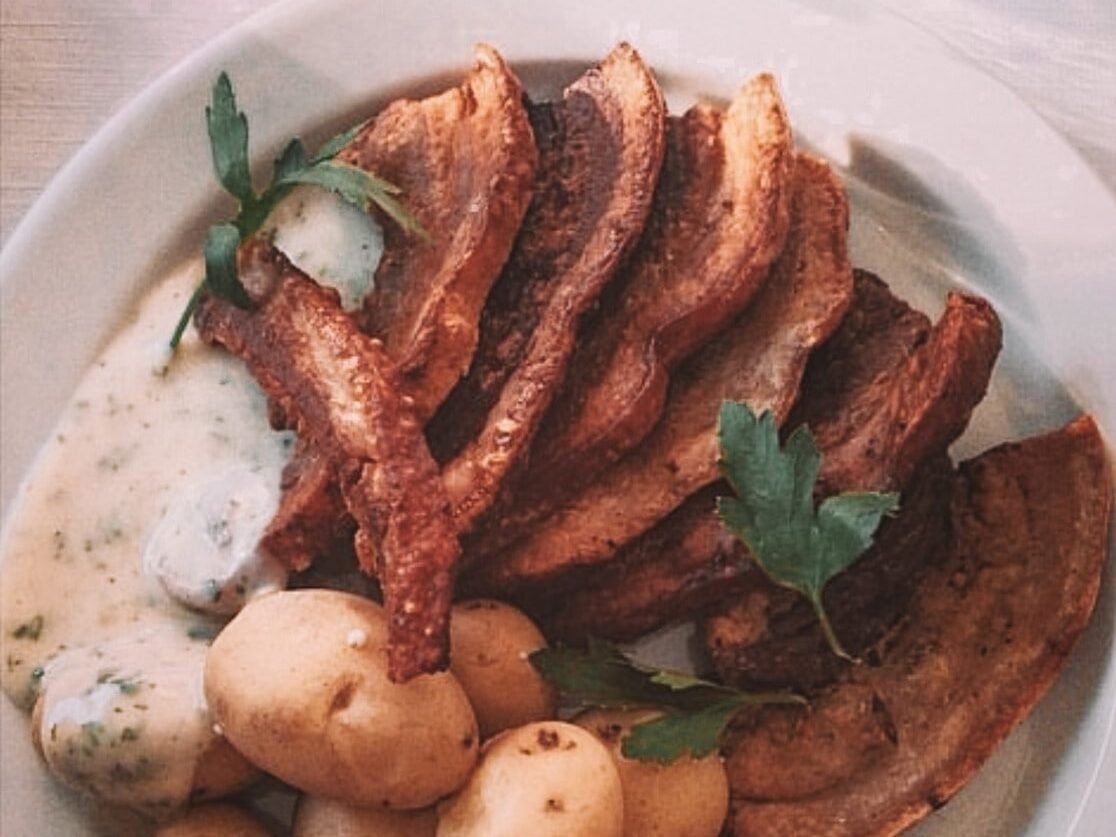
It’s a hearty meal that reflects the simplicity and richness of traditional Danish food culture.
Ideal Setting: A cozy Danish inn during the colder months.
Culinary Tip: The crispy pork should be perfectly balanced with the creaminess of the parsley sauce.
Tarteletter (Tartlets)
Tarteletter, or Danish tartlets, are a beloved staple at family gatherings and festive Danish occasions. These small, open-faced pastry shells are typically filled with a creamy mixture of chicken and asparagus or other creamy seafood concoctions. The contrast between the flaky pastry and the rich, savory filling makes them an irresistible treat.
Local Tip: Eat tarteletter during Easter and other celebrations. They are a must-try for a true taste of Danish festivity.
Where to Try: Look for them at traditional local restaurants.
Medisterpølse
Medisterpølse is a thick, spicy sausage that is a common sight at Danish dinner tables, especially during the winter months. This pork sausage is seasoned with cloves, allspice, onions, and marjoram, making it rich in flavor. It’s traditionally served with boiled potatoes, creamy sauce, and pickled beetroot or red cabbage.
Serving Suggestion: Try Medisterpølse with a side of creamy mashed potatoes and lingonberry jam and green salad for a classic Nordic meal.
Cultural Note: This sausage is particularly popular during Christmas markets. Here it’s served hot from the grill.
Danish Pastries
When it comes to Danish pastries, the variety and craftsmanship are second to none.
Known locally as ‘wienerbrød’, these pastries were brought to Denmark by Austrian bakers. They have since become a national treasure and art to Danish bakers.
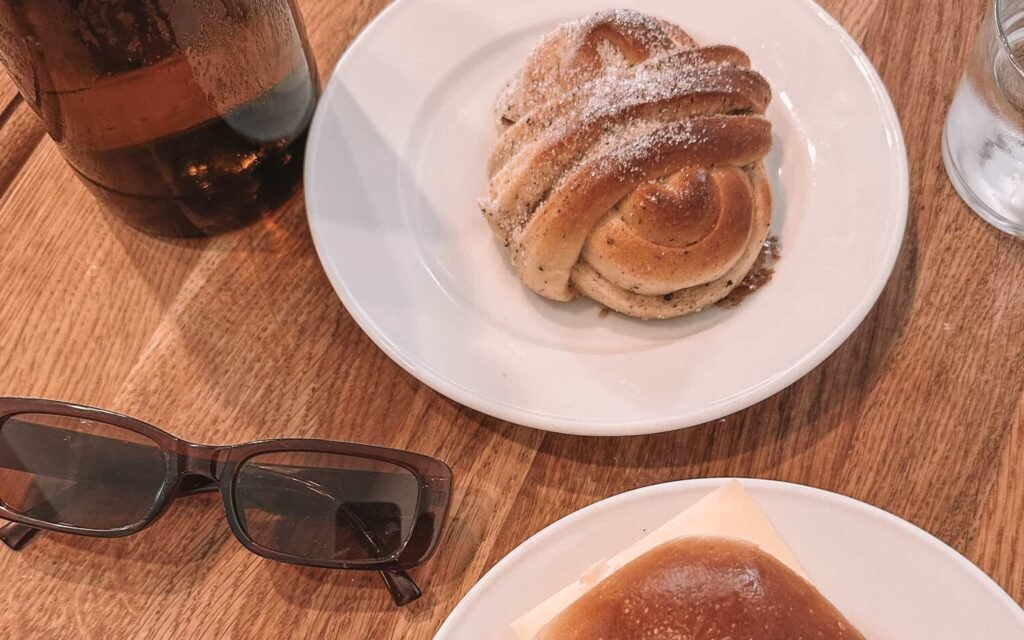
Each pastry is a work of art, with layers of flaky crust and sweet fillings like custard, jam, or sliced apples.
Must-Try: The cinnamon roll and the classic ‘Spandauer’ with vanilla or apple filling.
Fun Fact: Despite the global name, in Denmark, these treats are credited to the skills of Viennese bread bakers.
Rød Grød med Fløde
This traditional Danish dessert, whose name is a popular tongue twister among foreigners, consists of red berries stewed and served cold with a dollop of cream or whipped cream.
It’s a refreshing treat during the summer months.
Seasonal Delight: Best enjoyed in the summertime when berries are in season.
A fun fact from Denmark is that the name is often used to challenge non-native speakers with its pronunciation playfully.
Koldskål
Another summer favorite, this sweet cold soup is made from buttermilk, eggs, sugar, vanilla, and lemon. It is traditionally served with small biscuits called kammerjunkere.
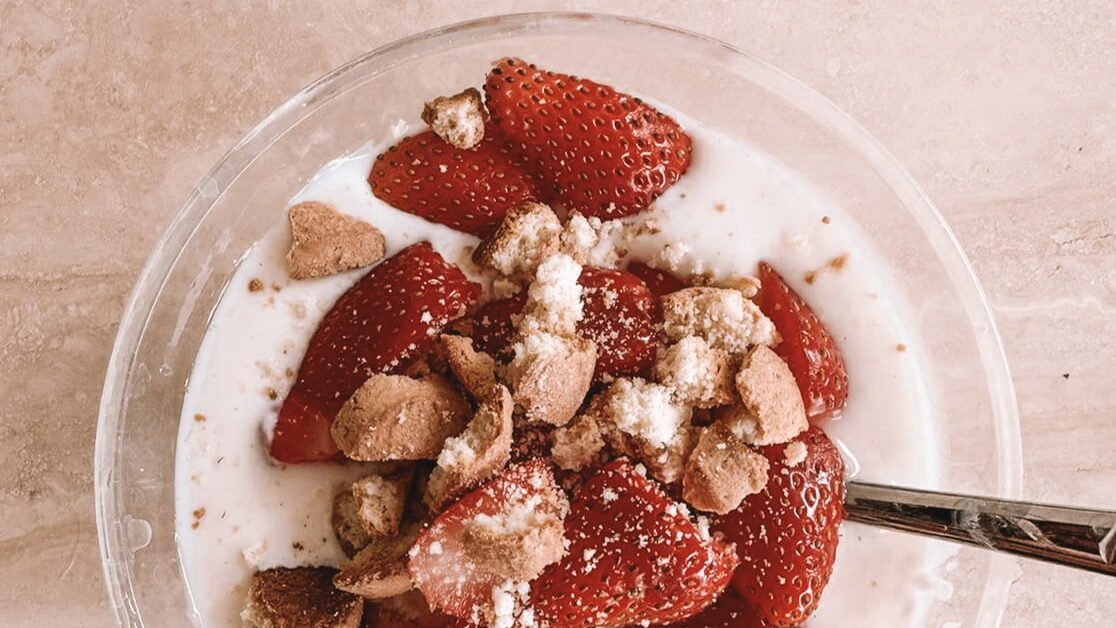
Koldskål is the epitome of a Danish summer dessert, light and refreshing, and it’s a personal favorite.
When to Enjoy: Perfect for hot days as a cooling dessert or snack.
Variations: Often topped with fresh berries or muesli for added texture.
Kanelsnegle (Cinnamon Snails)
Kanelsnegle, or cinnamon snails, are a type of Danish pastry that is a cousin to the famous cinnamon roll. These sweet pastries are made from a buttery, flaky dough. They are then filled with a delicious cinnamon sugar mixture.
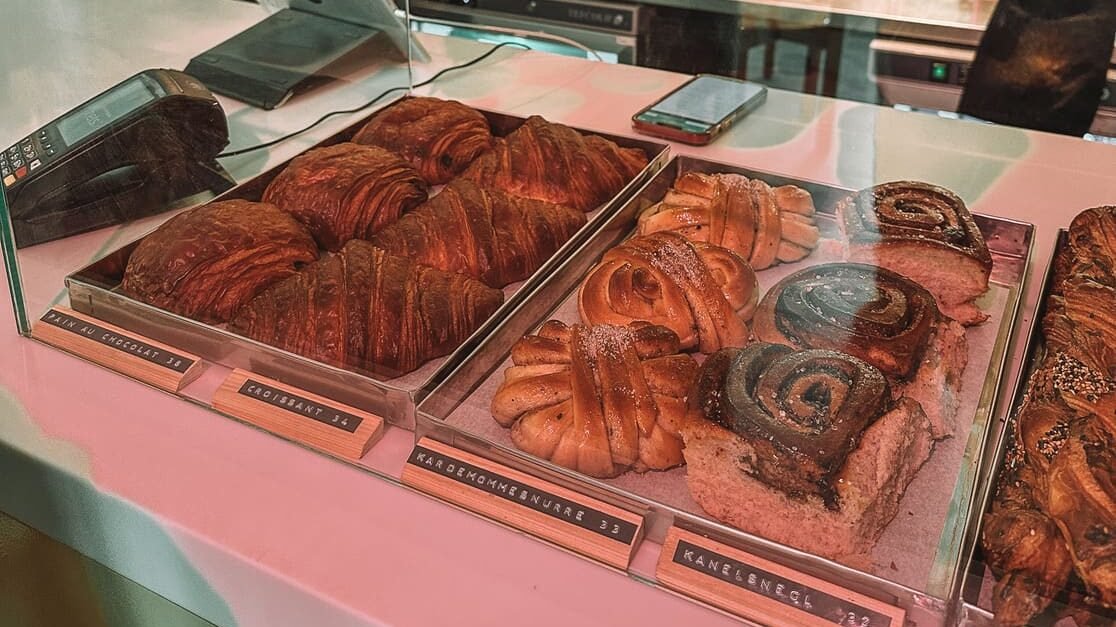
The pastry is rolled, sliced into snails, and baked to golden perfection.
Perfect Pairing: Enjoy a kanelsnegl with a hot cup of coffee for a traditional Danish breakfast or midday snack.
Fun Fact: Kanelsnegle are a favorite in Danish bakeries and are often larger and more decadent than their international counterparts.
Æblekage (Apple Cake)
Æblekage, which translates directly to “apple cake,” is a traditional Danish dessert that captures the essence of Danish coziness and simplicity.
Unlike a typical cake, Danish æblekage is more of a layered dessert consisting of stewed sweet apples, crispy biscuit crumbs, and a topping of whipped cream or vanilla custard.
This dessert is particularly popular in the autumn when Danish apples are in season and at their most flavorful.
Local Tradition: Often served during family gatherings and on special occasions, æblekage is a comforting dessert that brings warmth to the cooler Danish days.
How to Enjoy: Eat æblekage cold, which allows the flavors to meld beautifully. The contrast between the soft, sweet apples and the crunchy biscuits, topped with the creamy layer, makes every spoonful delightful.
Culinary Tip: For an authentic taste, use Danish apples like Belle de Boskoop or Ingrid Marie, which have excellent baking qualities.
Flødeboller
Flødeboller are delightful Danish confections, a true sweet treat consisting of a soft marshmallow-like filling on a biscuit base, all covered in chocolate.
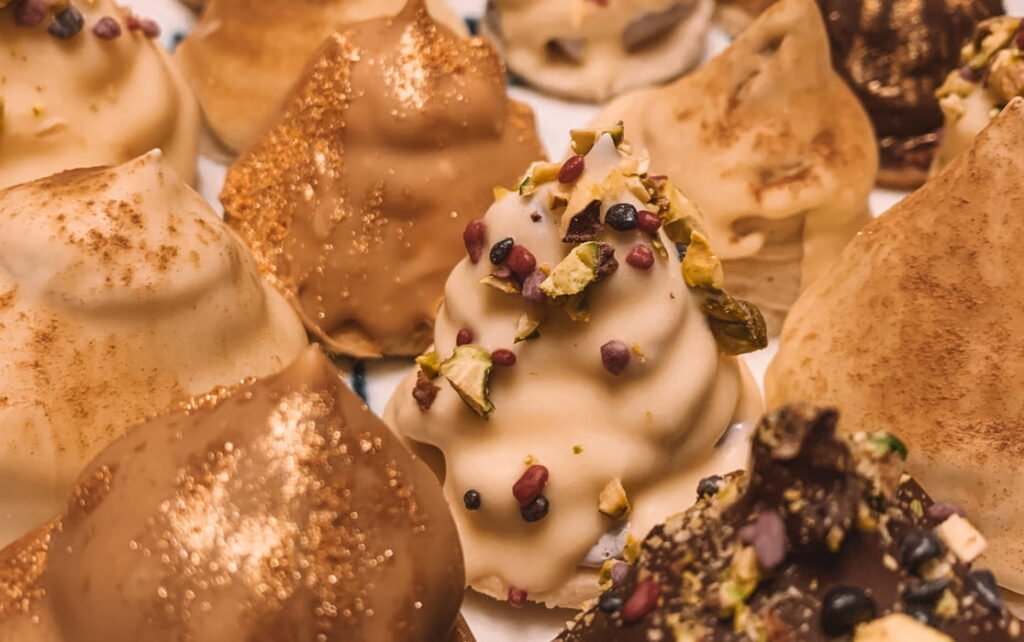
They come in various flavors, including traditional vanilla and bold licorice.
Perfect For a sweet snack after a meal or with a cup of coffee.
Tip: Try different varieties to find your favorite, as each chocolatier in Denmark might have their own unique take.
Lakrids (Licorice)
Lakrids is a cornerstone of Danish candy culture, known for its strong, salty flavor which is much more intense than the sweet licorice typically found in other countries. In Denmark, licorice is used in a variety of sweets, ice creams, and even in cooking.
Try It: For a unique Danish treat, look for licorice coated in chocolate or combined with other Nordic flavors like sea buckthorn.
Local Experience: Don’t miss out on tasting licorice ice cream when visiting Denmark— it’s a surprisingly delicious flavor that locals love.
Øl (Danish Beer)
Danish beer is famous worldwide, with Carlsberg and Tuborg being the most famous brands. However, Denmark’s craft beer scene is also thriving, offering a range of styles from traditional pilsners to experimental brews infused with local flavors.

Local Tip: Visit a local “bryghus” (brewery) or bar in Copenhagen to sample some unique Danish brews directly from the source.
Must-Try: Don’t leave Denmark without trying a classic Danish pilsner, known for its crisp and refreshing taste.
Snaps (Distilled Fruit Brandy)
Snaps, also known as aquavit, is a traditional Danish spirit that is often enjoyed during festive gatherings, especially Christmas and Easter. This potent distilled brandy is flavored with herbs and spices such as caraway, dill, and even orange peel, making it a perfect digestive.
Serving Tradition: Drink snaps alongside a table of cold dishes, especially during a festive “julefrokost” (Christmas lunch).
Pro Tip: Try different flavors of snaps to fully appreciate its variety, each offering a unique taste experience.
Faxe Kondi (Lemon Lime Soda)
Faxe Kondi, a popular Danish soft drink, has been a favorite since the 1970s. It’s a lemon-lime-flavored soda with a hint of elderflower, giving it a refreshing and distinct taste that differentiates it from other sodas in its category.
When to Drink: Faxe Kondi is a great non-alcoholic beverage option to refresh yourself on a warm day or to pair with a heavy meal.
Cultural Insight: Faxe Kondi is a drink for sports and youth culture in Denmark, which makes it a nostalgic drink for many Danes.
What Makes Danish Food Special?
Danish cuisine, often characterized by its simplicity, quality of ingredients, and the tradition it embraces, holds a unique place in the culinary world.
Here are several factors that make Danish food special and a must-try for anyone visiting Denmark or exploring international cuisines.
Emphasis on Local and Seasonal Ingredients
In Danish food culture, the use of locally sourced and seasonal ingredients is a big thing.
The harsh winters and bright summers of Scandinavia dictate what is available, leading to a cuisine that changes with the seasons.
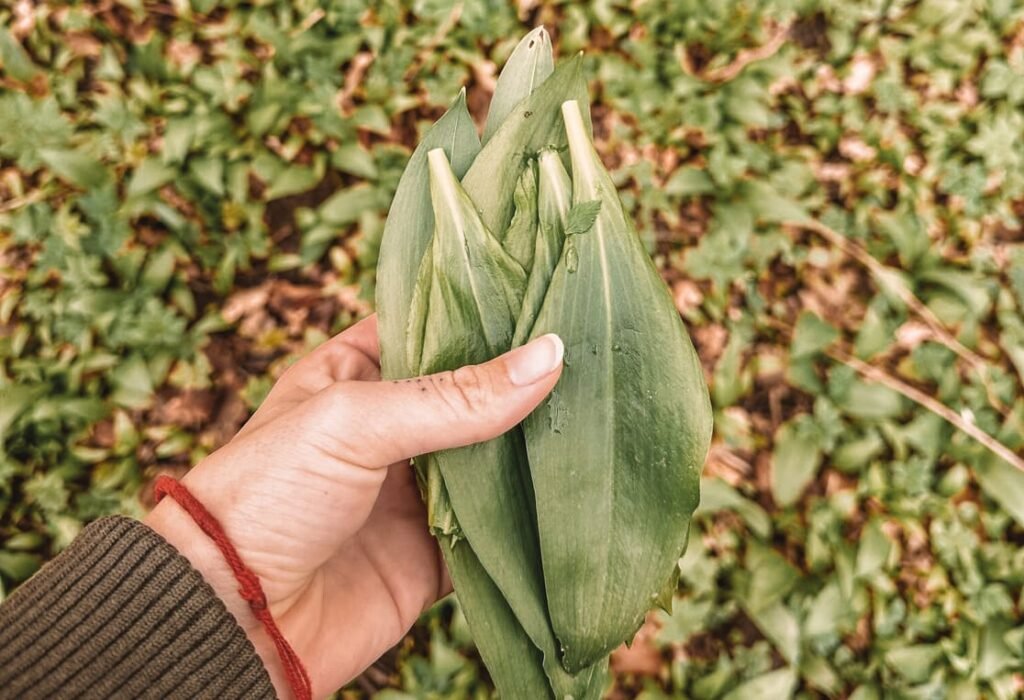
This not only ensures that the food is fresh but also enhances the flavors and nutritional value of the traditional Danish dishes.
For example, fish like herring are a staple, reflecting Denmark’s extensive coastline and fishing heritage.
The Art of Hygge
Hygge, the Danish concept of coziness and comfortable conviviality, is also a fundamental aspect of Danish dining experiences.
Meals are an opportunity to unwind and enjoy good food in the company of friends and family, which makes them an integral part of the national identity.
The food reflects this itself, which is comforting, hearty, and meant to be savored.
Check out some of the best hygge spots in Copenhagen to experience it.
Minimalistic Yet Flavorful Preparation
Danish cuisine is not about overly complex preparations but rather focuses on enhancing the natural flavors of the ingredients.
The cooking techniques are often straightforward—boiling, smoking, pickling, and fermenting are commonly used to preserve the integrity of the food while enriching its taste.
This simplicity in preparation allows the quality of the ingredients to shine through, making each meal a testament to the freshness and purity of Danish produce.
Innovation and Global Influence
While traditional Danish food is revered, Denmark is also known for its culinary innovation.
Copenhagen, in particular, has become a global food capital, home to acknowledged restaurants like Noma, which have redefined Nordic cuisine.
These eateries experiment with traditional Danish techniques and flavors, infusing them with global influences to create modern dishes that are still distinctly Danish.
Commitment to Sustainability
Sustainability is another cornerstone of traditional Danish cooking.
Denmark’s food industry often leads in environmentally friendly practices, from organic farming to waste reduction in cooking.
This commitment supports the planet and ensures that the food is wholesome and sustainable, aligning with the global trend towards ethical eating.
Celebratory Foods
Danish food is also special due to its role in celebrations and holidays. Christmas dinners feature roast pork, caramelized potatoes, and rice pudding, and the summer offer delights of koldskål, fresh berries, and pickled vegetables. Many Danish dishes are common to specific times and festivities, which makes them unique and fun.
Final Thoughts on Eating in Denmark
Exploring the best food in Denmark is a journey through time and taste. These traditional Danish dishes tell a story of the land, the people, and their traditions.
From the hearty meals designed to sustain through harsh winters to the light and refreshing treats enjoyed during the bright Nordic summers, Danish cuisine offers a palette of experiences bound to enchant any traveler.
Whether you’re tucking into a warm, comforting plate of stegt flæsk or enjoying the delicate sweetness of a Danish pastry, the flavors of Denmark are sure to leave a lasting impression.
So dive in, taste generously, and enjoy the culinary delights that this Scandinavian gem has to offer!
If you liked this article, maybe you’d also like to read more about what Denmark is known for.
FAQs About Danish Food
While many dishes could claim this title, smørrebrød and stegt flæsk are among the most iconic and traditional Danish foods.
Yes, Denmark is very accommodating to vegetarians, with many restaurants offering plant-based versions of traditional dishes, such as vegetarian frikadeller.
Beer and schnapps are traditional, but for a non-alcoholic option, Danish fruit juices or mineral water are excellent choices.
Danish cuisine relies heavily on locally sourced and seasonal ingredients, such as fish, pork, potatoes, dairy products, and root vegetables. Herbs like dill and parsley enhance flavors.
You can find Danish pastries, locally known as “wienerbrød,” in bakeries throughout Denmark. For the freshest and most authentic pastries, visit bakeries early in the morning in Copenhagen, Aarhus, or Odense.
BEST TRAVEL RESOURCES
BOOK YOUR FLIGHT:
Not sure how to get the best and cheapest flights? Use Skyscanner for the best deals. The great tip is to be flexible with dates and destinations if you want the best deals.
Alternatively, get a membership with Wayaway and receive a cashback on cheap flights and hotels every time you book! Via the link, you even get a 10% discount on your membership.
BOOK GREAT ACCOMMODATION:
Booking great accommodation is not difficult, but it sucks overpaying. Use Booking.com for the greatest hotel deals and Hostelworld for amazing hostel stays. Also, sign up for Worldpackers to get FREE accommodation in exchange for work.
BEST TRAVEL INSURANCE:
Traveling without insurance is a mistake that you shouldn't make - trust me, I’ve done it. I suggest SafetyWing since they offer great and flexible policies - especially for long-term traveling or for digital nomads. World Nomads is the best insurance with extensive coverage.
NEED HELP WITH YOUR VISA?
Figuring out how and when you need a visa can be a bit of a jungle. iVisa is a very handy and user-friendly service.
HAS YOUR EU FLIGHT BEEN DISRUPTED?
Use AirHelp as a service to get flight compensation on your European flights in case your flight was delayed, canceled, or disrupted in other ways. Often you are actually entitled to compensation!
DO YOU NEED A LOCAL SIMCARD FOR YOUR TRIP?
Airalo has affordable rates for local eSIM solutions in more than 200 different destinations. Stay easily connected on your trip!

